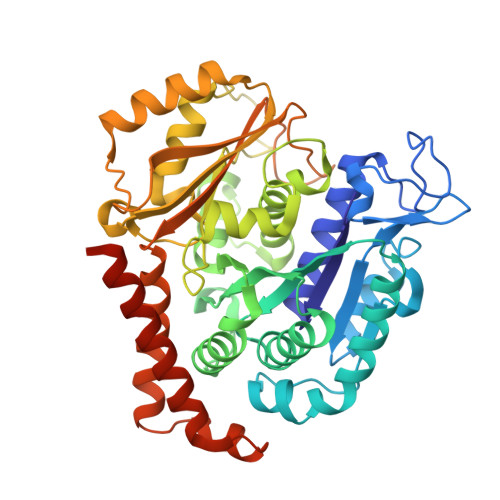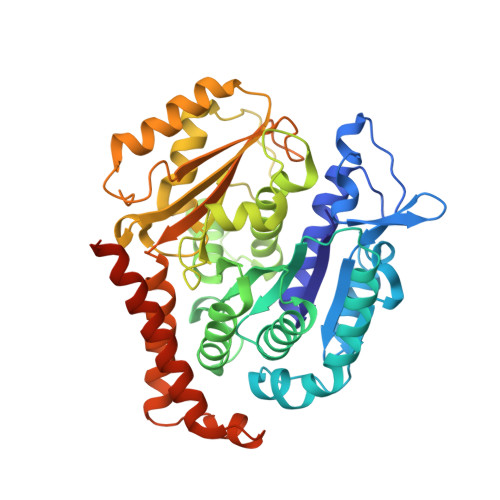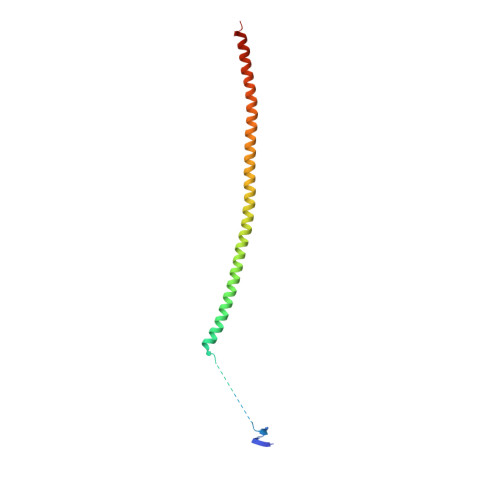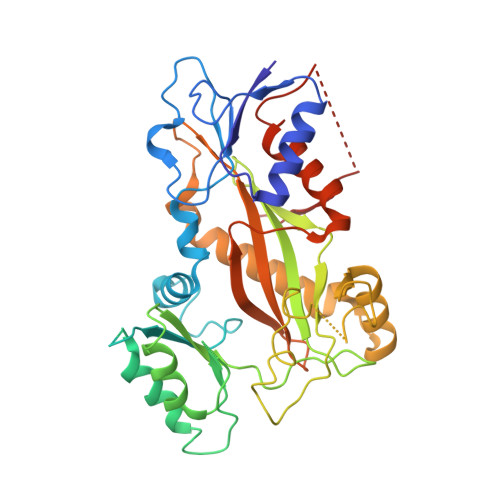Structures of a diverse set of colchicine binding site inhibitors in complex with tubulin provide a rationale for drug discovery.
Wang, Y., Zhang, H., Gigant, B., Yu, Y., Wu, Y., Chen, X., Lai, Q., Yang, Z., Chen, Q., Yang, J.(2016) FEBS J 283: 102-111
- PubMed: 26462166
- DOI: https://doi.org/10.1111/febs.13555
- Primary Citation of Related Structures:
5C8Y, 5CA0, 5CA1, 5CB4 - PubMed Abstract:
Microtubules are dynamic assemblies of αβ-tubulin heterodimers and have been recognized as highly attractive targets for cancer chemotherapy. A broad range of agents bind to tubulin and interfere with microtubule assembly. Despite having a long history of characterization, colchicine binding site inhibitors (CBSIs) have not yet reached the commercial phase as anti-cancer drugs to date. We determined the structures of tubulin complexed with a set of structurally diverse CBSIs (lexibulin, nocodazole, plinabulin and tivantinib), among which nocodazole and tivantinib are both binary-function inhibitors targeting cancer-related kinases and microtubules simultaneously. High resolution structures revealed the detailed interactions between these ligands and tubulin. Our results showed that the binding modes of the CBSIs were different from previous docking models, highlighting the importance of crystal structure information in structure-based drug design. A real structure-based pharmacophore was proposed to rationalize key common interactions of the CBSIs at the colchicine domain. Our studies provide a solid structural basis for developing new anti-cancer agents for the colchicine binding site. The atomic coordinates and structure factors for tubulin complexed with lexibulin, nocodazole, plinabulin and tivantinib have been deposited in the Protein Data Bank under accession codes 5CA0, 5CA1, 5C8Y and 5CB4, respectively.
- State Key Laboratory of Biotherapy and Cancer Center, West China Hospital, Collaborative Innovation Center for Biotherapy, Sichuan University, Chengdu, China.
Organizational Affiliation:



























